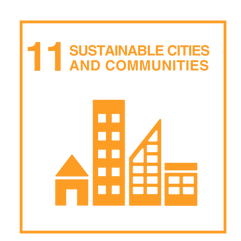UNEP Environmental data collection guidance for conflict zones
Development of a proof of concept to support technical guidance for collecting environmental data in areas affected by armed conflict.

Project snapshot
Region: Global
Dates: 28 May – 15 July 2025
Partners: UNEP, ERM, TAUW Foundation
Funding sources: UNEP
The NICOLE Foundation supported UNEP in the initial implementation of UNEA Resolution 6/12 by creating a proof of concept for state-of-the-art technical guidance on environmental data collection in conflict-affected areas.
Why this work matters
Armed conflicts cause significant environmental harm across air, water, soil and waste. Damage to industrial facilities, utilities, energy infrastructure and buildings can lead to chemical spills, water contamination and hazardous waste, with direct threats to people, ecosystems and biodiversity. In addition, unplanned refugee camps can generate significant environmental impacts through uncontrolled waste disposal, water use and contamination, and extensive wood harvesting for cooking and heating.
High-intensity conflicts in Ukraine, Gaza and Sudan have underlined the need for a coordinated, science-based approach to environmental protection during armed conflict. In February 2024, the UN Environment Assembly adopted Resolution 6/12, urging states to strengthen environmental assistance and recovery in conflict-affected areas.
Building on an implementation plan it had prepared earlier for UNEP, the NICOLE Foundation was tasked subsequently to develop a proof of concept for new technical guidance – demonstrating what is possible and laying the foundations for full-scale development.
Our approach
Stakeholder engagement: Targeted consultation with experts from diverse conflict and crisis contexts, gathering insights on data gaps, methods and technologies, and data storage and retrieval. Developed a curated contact database of funders, technology providers and data coordinators, and collected responses from 11 organisations through a Request for Information shared via an ArcGIS StoryMap.
Proof of concept: Piloted elements of the proposed guidance, including expert engagement, user profile development, decision-making tools, and draft guidance documents on groundwater sampling and remote sensing technologies.
Technical methodologies
ArcGIS StoryMap for information gathering and reporting.
Microsoft SharePoint for document management.
Microsoft Teams for internal and external communication.
Results and impact
The fast-tracked timeline required rapid mobilisation of stakeholder engagement specialists and IT-enabled data gathering capabilities to produce a compelling, pragmatic proof of concept.
Key achievements
Delivered a functioning StoryMap as a proof of concept for technical guidance on environmental data collection in conflict settings.
Demonstrated practical tools for stakeholder engagement, decision support and guidance drafting.
This project represents the first step in a longer process toward full guidance development.
Closing statement
This proof-of-concept project shows how the NICOLE Foundation translates a strategic plan into tangible tools and methodologies that will lay the groundwork for robust, science-based environmental data collection in conflict-affected areas.
Related project: This proof-of-concept project built an earlier implementation implementation plan developed by the NICOLE Foundation for UNEP.
Read the case study: Development of an implementation plan to prepare technical guidance for collecting data on environmental damage associated with armed conflict.
The NICOLE Foundation welcomes collaboration with experts to advance projects like these.
Supported Sustainability Development Goals (SDGs):
















